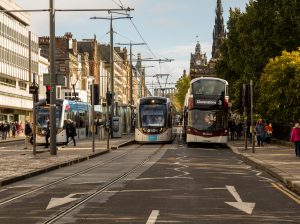4. Sustainable transport hierarchy
Get an overview of the sustainable transport hierarchy. Learn more about active travel, public transport, car sharing, personal car use and air travel and how improving it can impact your journeys and CO2 emissions.
You should use sustainable transport when possible. As a society, we should not default to using cars for getting from A to B.
It’s best to opt for a sustainable transport hierarchy. This aims to guide people through decision–making to help them choose the most sustainable mode of transport.
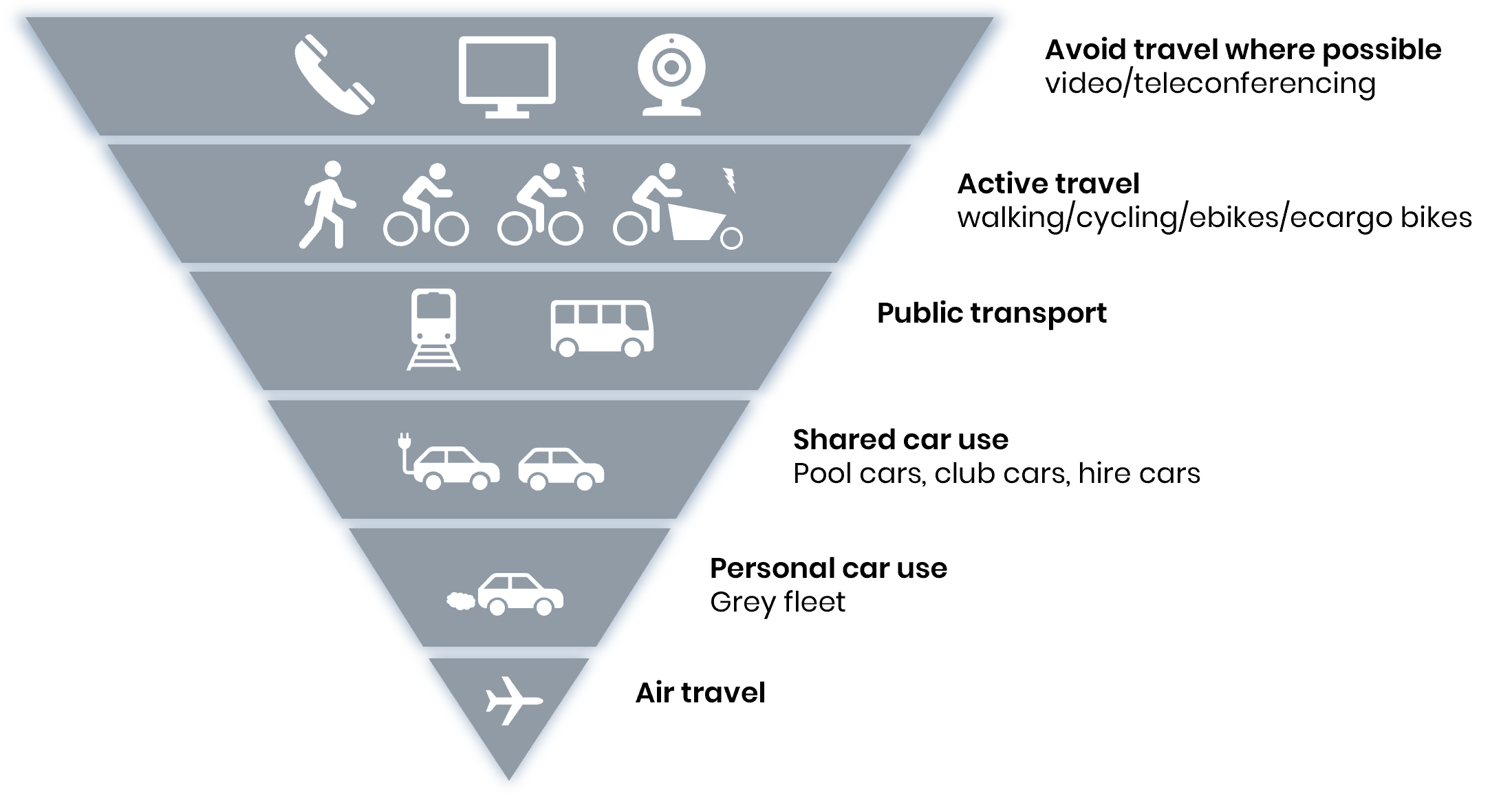
-
This is the simplest, most cost effective and immediate way to reduce your CO2e emissions, improve air quality and save money.
You can reduce your carbon footprint by introducing virtual ways of working. Commuting wastes time and increases your carbon footprint, even when using public transport. Virtual meetings are more efficient, cost effective, and often more productive than face-to-face meetings. It would benefit your organisation if you introduced this way of working.
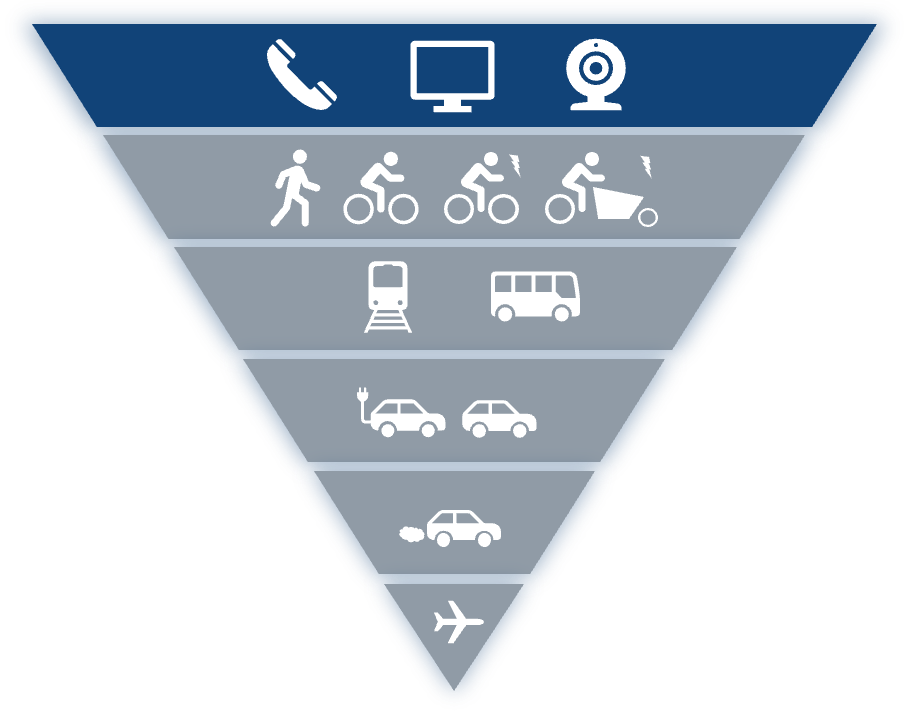
-
You should use active travel methods, such as walking or cycling, where possible. By choosing to walk or cycle a journey rather than using a car, you’re helping to reduce air pollution.
Read more about the benefits of active travel.
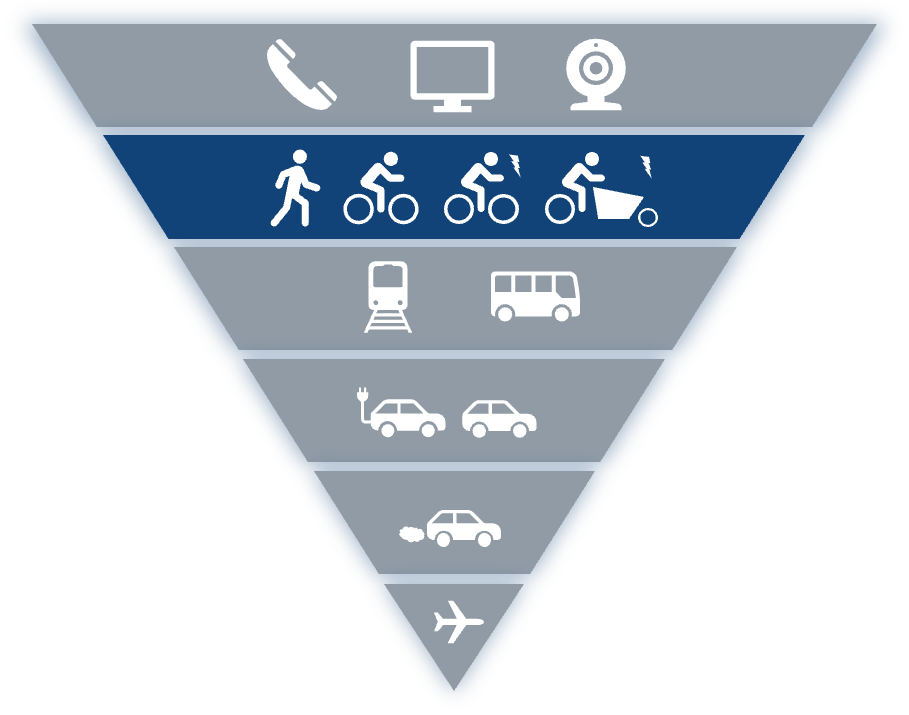
-
There may be times when active travel isn’t a suitable option. For example, you may be travelling a long distance or have a large load. For these journeys you could consider using sustainable public transport. Public transport can reduce the amount of traffic on the roads. This leads to fewer emissions per passenger mile than single-occupancy vehicles.
If your staff use public transport, you won’t need to worry about paying parking charges or low emission zone charges. There will also be fewer delays caused by traffic congestion.
For this to work, you should first make sure you have a system in place to reimburse employees when they take public transport for business travel. You then need to encourage staff to travel by public transport where possible.

-
Using car share schemes, pool cars, car clubs, and hire cars can help cut your CO2e emissions.
In the UK, commuting and business vehicles have the lowest occupancy rates, with 89% of commute and 86% of business journeys made in single-occupancy cars. This is compared to 62% for all UK journeys . As figure three shows, this percentage is increasing. Two employees travelling to a similar destination will use less fuel if travelling together than separately.
CoMoUK released a comprehensive report in June 2021 as part of its action kit for Scottish businesses. The report outlines the benefits of shared transport and the steps you can take to reduce your grey fleet mileage and encourage modal shift.
It’s best to make sure that where your employees are using cars and vans, they are doing so as sustainably as possible. Ideally, this should be by only using zero emissions vehicles.
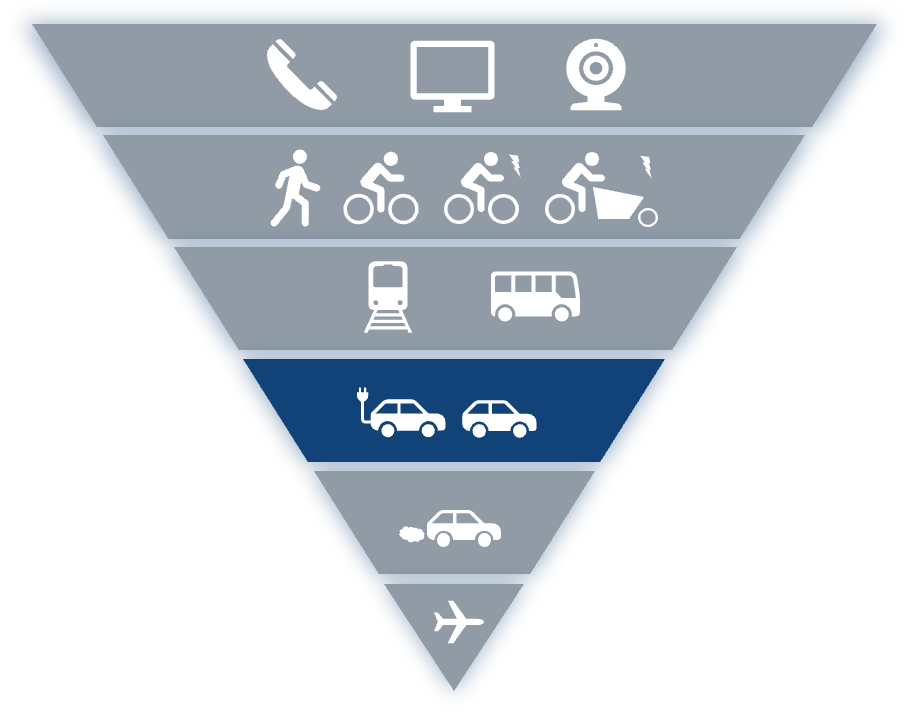
Proportion of lone drivers in business travel and commuting
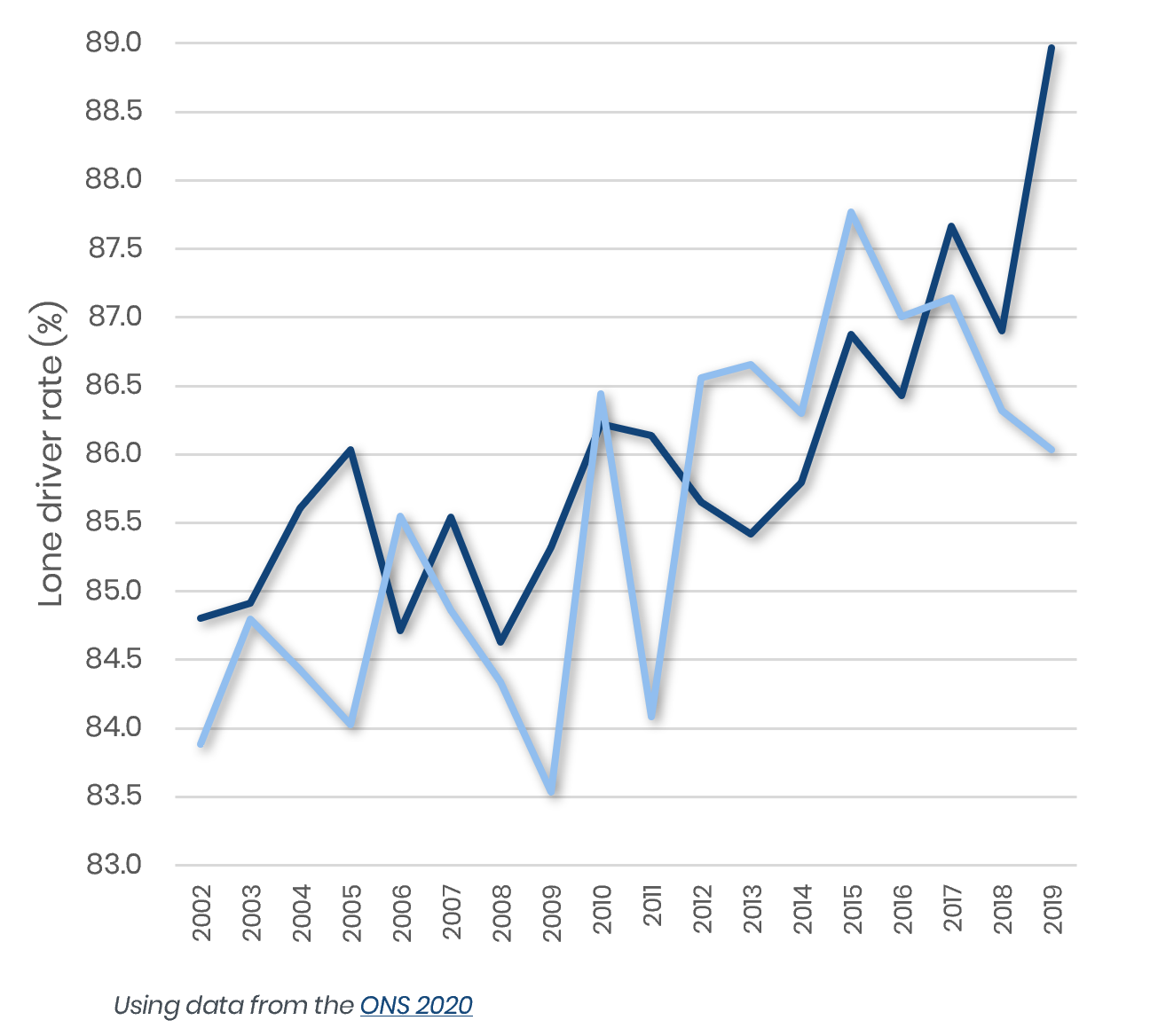
Read more here.
-
Using an employee’s car for business travel should be a last resort, as employee-owned vehicles tend to be older and less efficient than your company-owned fleet.
This is due to the lack of measures to monitor the vehicle’s age and efficiency. Emissions could be far higher than expected. If your organisation relies on a grey fleet, you will likely pay more for miles driven by highly polluting vehicles.
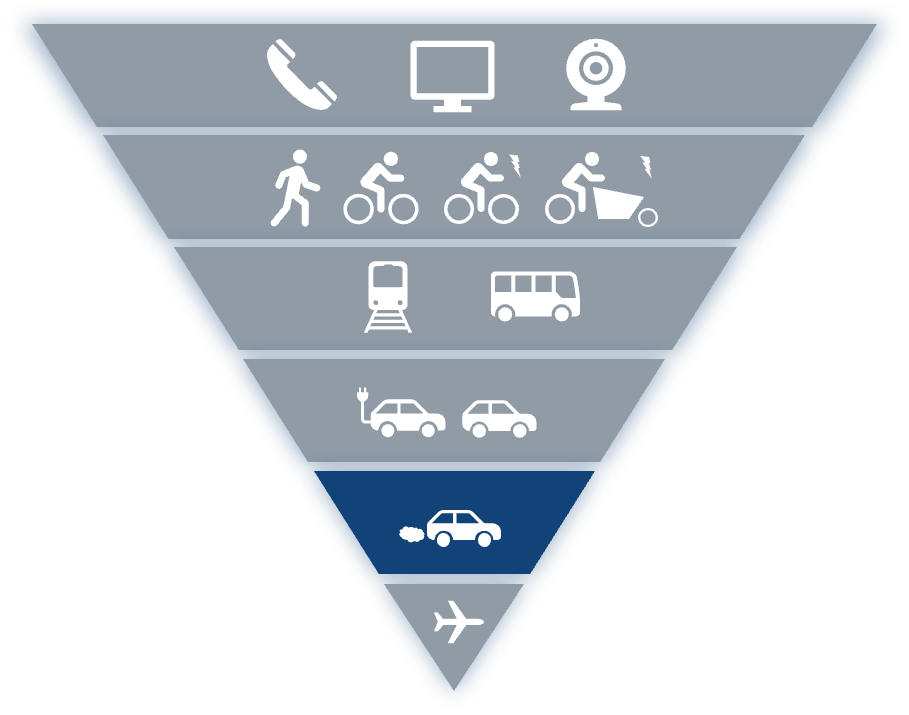
Grey fleet cost compared to average fuel cost

-
You should avoid air travel as much as possible.
The COVID-19 pandemic has proved that many conferences can take place online, eliminating the need for international travel. This reduction in air travel has resulted in significant cost, time and CO2e emissions savings.
Roughly 2.4% of global CO2 emissions come from flying. Greenhouse gases produced by aircraft more than double flying’s global warming impact.
Flying contributes to fewer emissions than other types of transport, such as driving. However, it should only be used when necessary as it’s harder to decarbonise. For example, if the total flight level stays the same, flying’s proportional contribution to overall emissions will increase considerably as other emissions fall.
In wealthier countries like the UK, it’s estimated that less than half the population fly yearly and less than 15% fly frequently. However, before the COVID-19 pandemic, the number of people flying was increasing globally.
CO2e emissions per km per passenger across different vehicle types. Air travel emissions vary depending on the flight length, the aircraft’s cruising altitude and weight (data from Department for Business, Energy and Industrial Strategy, 2019).
